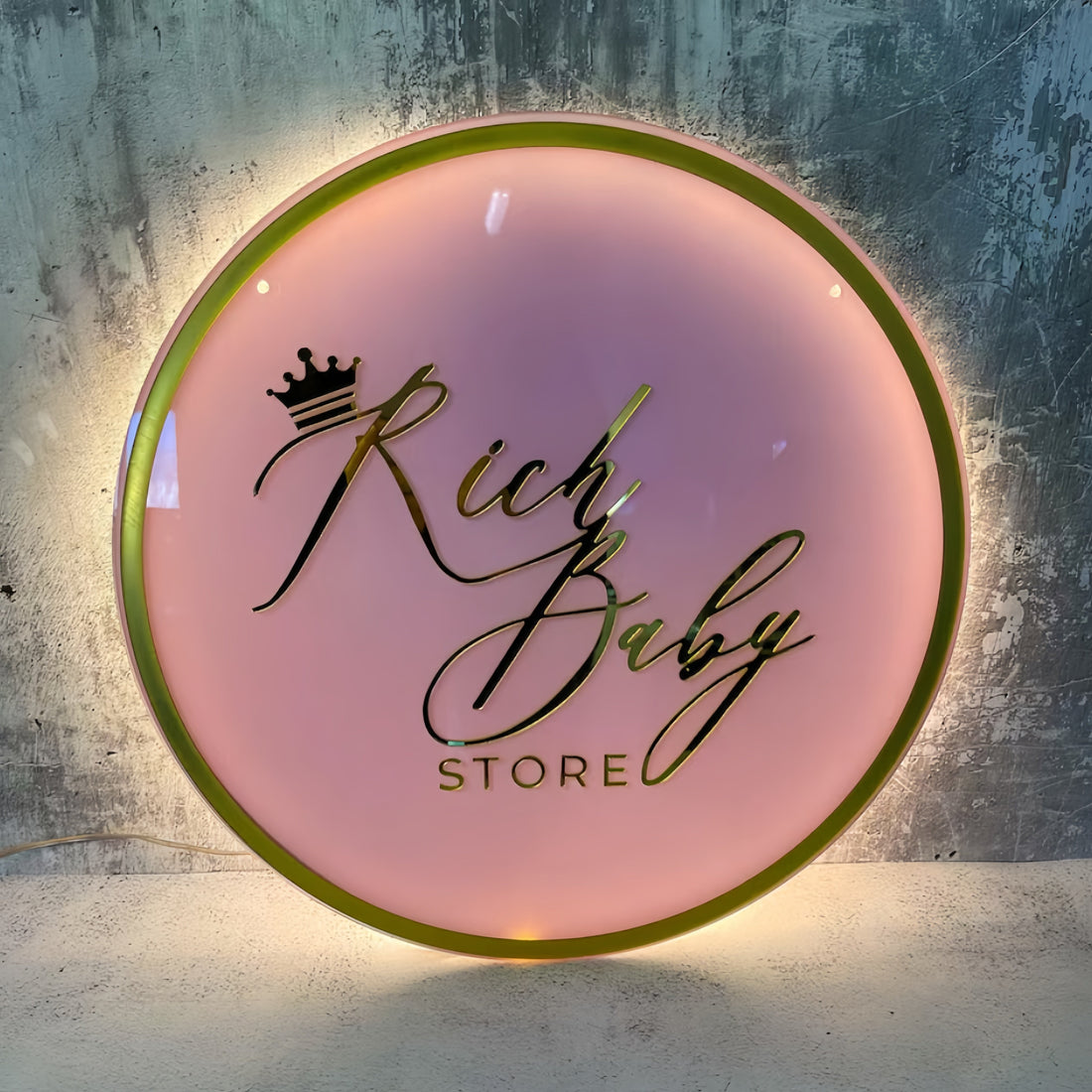
The Ultimate Guide to Acrylic Signs: Features, Benefits, and Uses

Acrylic signs have become a popular choice for businesses, events, and personal branding due to their sleek appearance, versatility, and durability. Whether you're a business owner looking for professional signage, an event planner needing custom displays, or an artist seeking a unique medium, acrylic signs offer a premium solution. In this article, we'll explore the benefits, applications, design tips, and maintenance practices for acrylic signs.
What Are Acrylic Signs?
Acrylic signs are made from a transparent plastic material known as polymethyl methacrylate (PMMA). Often used as an alternative to glass, acrylic offers a similar glossy finish but is lighter and more durable. These signs can be customized with printed graphics, vinyl lettering, laser-cut designs, and even LED lighting.
Benefits of Acrylic Signs
Acrylic signs provide several advantages over traditional materials like metal, wood, or glass. Below are some key benefits:
1. Professional and Modern Aesthetic
Acrylic signs have a high-end, glossy appearance that gives any space a professional touch. They are often used in corporate offices, retail stores, and upscale environments to create a clean and modern look.
2. Durability and Longevity
Unlike glass, acrylic is shatter-resistant and can withstand impacts without breaking easily. It also resists UV light, preventing yellowing and fading over time, making it ideal for indoor and outdoor use.
3. Customization Options
Acrylic signs can be customized in numerous ways, including:
-
Printed graphics and logos
-
Cut-out lettering and shapes
-
Frosted or clear finishes
-
LED backlighting for illuminated effects
4. Lightweight and Easy to Install
Compared to glass and metal, acrylic is significantly lighter, making it easier to install and transport. Many acrylic signs can be mounted with standoffs, adhesive backing, or hanging systems.
5. Weather and Chemical Resistance
Acrylic is resistant to moisture and many chemicals, making it suitable for outdoor signage, restaurant menus, and industrial applications.
Applications of Acrylic Signs
Acrylic signs can be used in a variety of industries and settings. Here are some of the most common applications:
1. Business and Office Signage
Companies use acrylic signs for lobby signs, directional signage, and nameplates. The polished look of acrylic enhances branding and professionalism.
2. Retail and Storefront Displays
Retailers use acrylic for promotional signs, product displays, and store logos. Its ability to be printed with vibrant colors makes it an attractive option for catching customers’ attention.
3. Trade Shows and Exhibitions
Custom acrylic signs are used at trade shows to create eye-catching booth displays, backdrops, and product presentations.
4. Restaurant Menus and Hospitality Signage
Acrylic menus, reservation signs, and wall-mounted displays add a sophisticated touch to restaurants, hotels, and cafés.
5. Personalized and Decorative Uses
Acrylic can also be used for home decor, wedding signs, and personalized gifts such as engraved nameplates and photo displays.
Designing an Effective Acrylic Sign
When designing an acrylic sign, consider the following factors to ensure it meets your needs:
1. Choose the Right Thickness
Acrylic sheets come in various thicknesses, typically ranging from 1/8 inch to 1 inch. Thicker acrylic is sturdier and ideal for large signs, while thinner sheets are better for small displays.
2. Select the Proper Finish
-
Glossy Finish: Provides a reflective, high-end look.
-
Matte or Frosted Finish: Reduces glare and adds a subtle elegance.
-
Clear Acrylic: Ideal for modern, floating effects.
-
Colored Acrylic: Adds bold visual appeal.
3. Typography and Font Selection
Ensure that text is legible and fits the purpose of the sign. Sans-serif fonts like Helvetica and Arial are great for modern business signs, while script fonts work well for weddings and personal decorations.
4. Consider Lighting Options
Acrylic signs can be illuminated with LED lights for added visibility. Backlit and edge-lit acrylic signs are particularly effective in dimly lit environments.
5. Mounting Methods
Decide how the sign will be displayed:
-
Wall Standoffs: Creates a floating effect.
-
Adhesive Mounting: Suitable for smaller signs.
-
Hanging Chains or Wires: Common for storefronts and trade shows.
Maintaining and Cleaning Acrylic Signs
Proper maintenance ensures the longevity of acrylic signs. Follow these tips:
1. Use a Soft Cloth for Cleaning
Avoid abrasive materials that can scratch the surface. A microfiber cloth is ideal for wiping down acrylic signs.
2. Use Mild Soapy Water
Avoid harsh chemicals like ammonia-based cleaners (e.g., Windex), which can cause acrylic to become cloudy over time.
3. Prevent Scratches and Cracks
Handle acrylic signs with care. When storing them, place a protective layer between stacked signs to prevent scratching.
4. Avoid Direct Heat Sources
Prolonged exposure to high heat can warp acrylic signs. Keep them away from direct sunlight, heaters, or other heat-emitting sources.
Conclusion
Acrylic signs are an excellent choice for businesses, events, and personal decor due to their elegance, durability, and versatility. Whether you're designing a corporate office sign, a stylish retail display, or a custom wedding sign, acrylic provides a sleek and professional look. By following proper design principles and maintenance practices, you can ensure that your acrylic signs remain vibrant and functional for years to come.